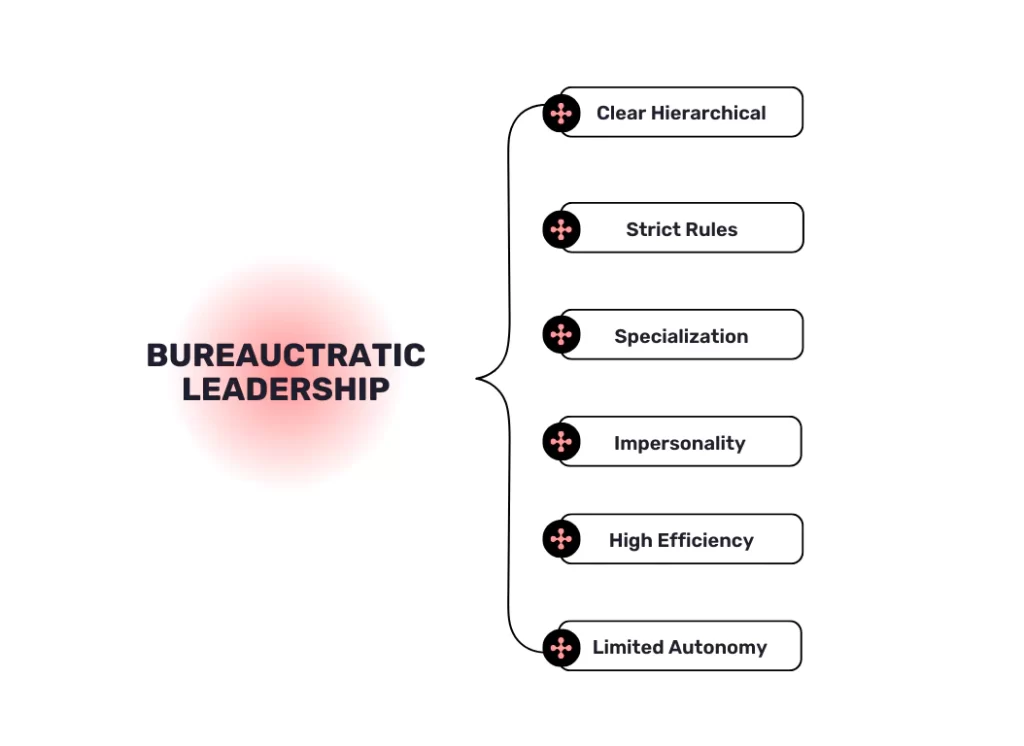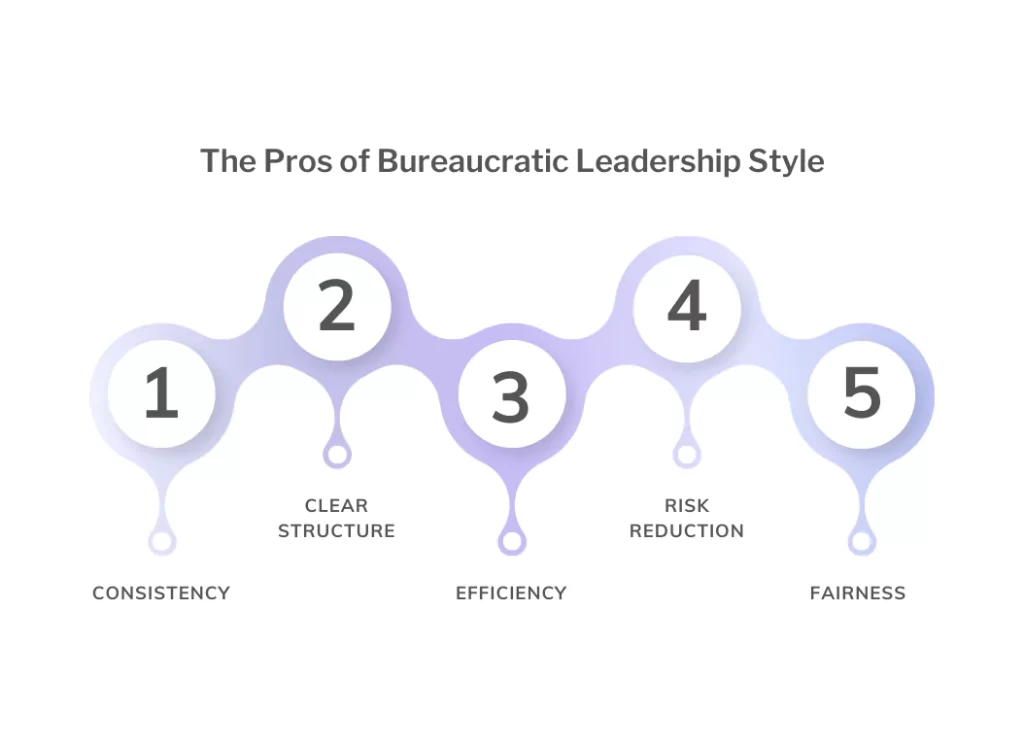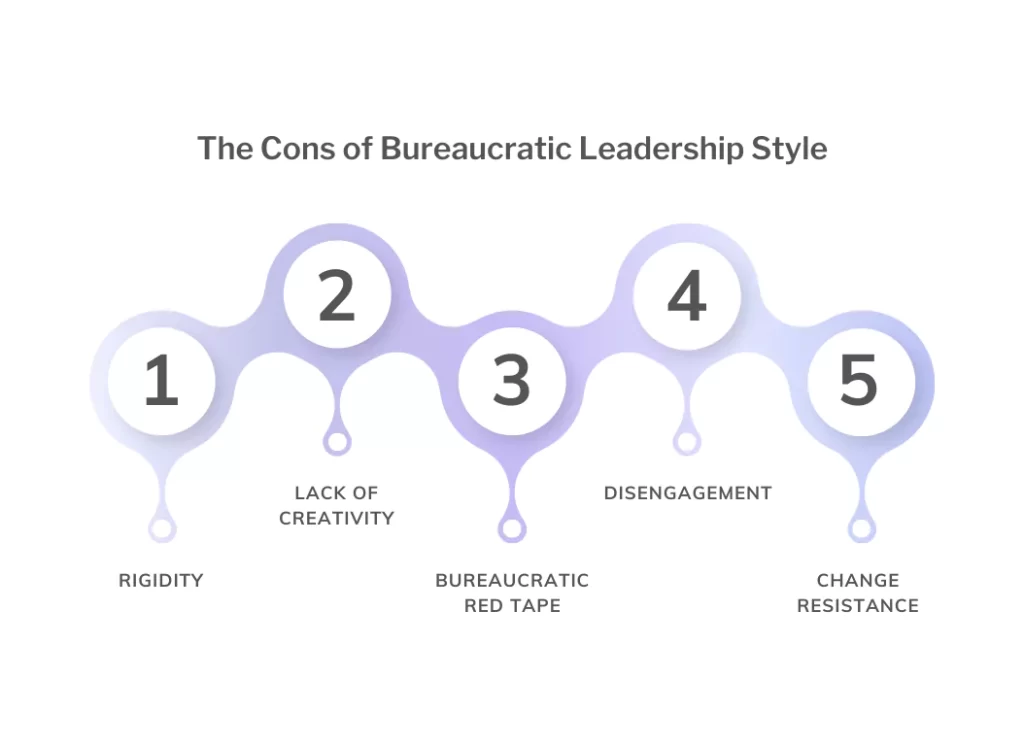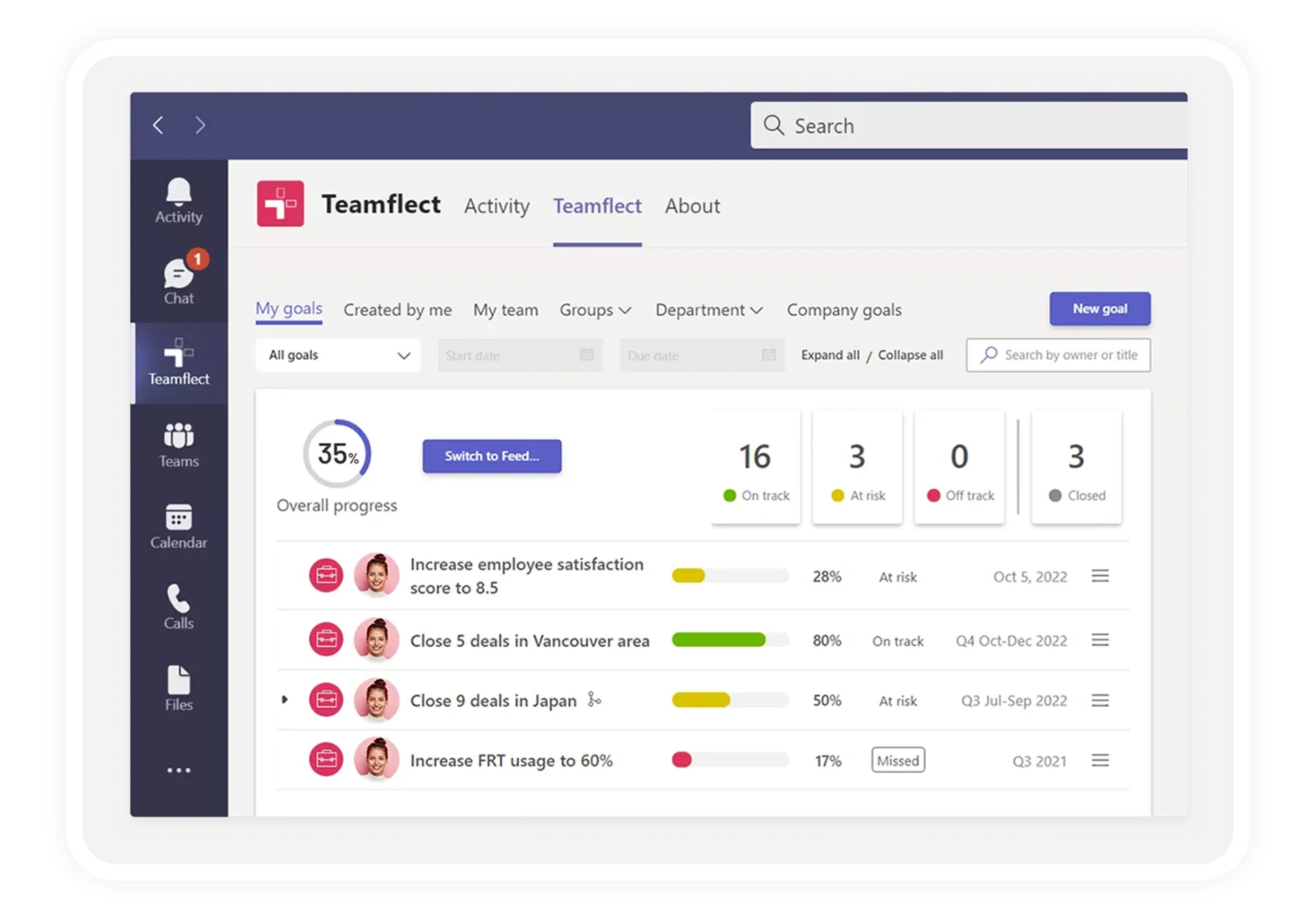Leadership takes a tremendously important role in any organization and there are many ways to go about it. Bureaucratic leadership style is only one. This leadership style is a timeless archetype. While bureaucratic leadership style can be misunderstood due to its structured and rule-bound nature, it’s one that has shaped generations’ worth of organizations.
Let’s take a closer look into how the bureaucratic leadership style works, its definition, principles, pros and cons, and more! So you can choose wisely what works for you and what will contribute to how your organization is going to thrive.
Table of Contents
What is the Bureaucratic Leadership Style At Work?
Bureaucratic leadership style at work is a highly structured and formalized approach to embody in management. This style of leadership is known for its strict adherence to established procedures, existing rules, and regulations. Basically the definition of doing things by the book!
Similar to the authoritarian leadership style, the authority of decision-making is centralized within the hierarchy, and drawn by clear lines of command and control. In this sense, a bureaucratic leadership style is one that ensures consistency and a certain reliability. The rules are pretty clear and accessible for everyone to reach in this type of management. As long as there is a good balance between necessary flexibility and structure, it’s a crucially effective leadership approach.
On another note, bureaucratic leadership style could also be considered the type of leadership that is transactional. This approach of management emphasizes the exchange between the leader and their employees. Just like a transaction, the details are clear. The roles, responsibilities, tasks, and goals are all well-known.
According to an article in ScienceDirect, these types of leaders trade resources valued by employees in return for desired behaviors such as increased effort or cooperation. Bureaucratic leadership in this sense is a version of a transactional leader, maintaining the status quo.
The Characteristics of Bureaucratic Leadership Style

Let’s define what the bureaucratic leadership style is by its distinctive characteristics:
Clear Hierarchical Structure: Bureaucratic organizations always have a chain of command that is very well and clearly defined, with each teammate knowing exactly where they stand, their spot within the hierarchy of the organization, and what responsibilities come with that particular role.
Strict Rules and Procedures: Procedures and policies run every aspect of the workplace with bureaucratic leadership, leaving little to no room for flexibility or any type of unclearness. This ensures consistency and standardization within the organization but can also lead to stifling creativity and innovation.
Specialization and Division of Labor: The overall work is divided into specific roles and departments in bureaucratic leadership, with each member of the workforce assigned to specific tasks based on their specialty. This ensures that all of the talent in the team is effectively contributing to the common goals and strategy of an organization, making this type of leadership a strong tool.
Impersonal Relationships: In bureaucratic leadership, there is always a very formal workplace relationship between the leaders themselves and the employees working with them. The focus is more on work-related matters instead of building any personal connections, leading to an extremely clear hierarchical structure in the organization.
Emphasis on Efficiency: Bureaucratic leaders tend to prioritize efficiency on all accounts in an organization to ensure the road to achieving organizational goals is as effective and smooth as possible, and efficiency in achieving organizational goals. They will always act in a manner of minimizing errors and maximizing productivity through strict adherence to pre-determined protocols.
Limited Autonomy: In management under a bureaucratic leader, employees will inherently have limited autonomy and decision-making authority, due to the simple nature of bureaucratic leadership, being as hierarchical as it is. Most decisions are made by higher-level managers following established procedures.
The Pros & Cons of Bureaucratic Leadership Style

Pros
- Consistency and Reliability: Bureaucratic leadership will ensure that the tasks at hand and all processes will be carried out in a consistent and orderly manner. Since bureaucratic leaders will follow existing protocols and established procedures, the actions will lead to predictable and therefore reliable outcomes.
- Clear Structure: The hierarchical structure provides clear lines of authority and responsibility, which automatically reduces any ambiguity or possible frustrations that may be caused by it among employees. This level of clarity is integral in painting a clear route to an organization’s success.
- Efficiency: Standardized procedures and dividing labor effectively contribute to increased efficiency through bureaucratic leadership. This directly happens since the tasks are all allocated based on expertise, and specialty and are performed in a systematic, efficient manner.
- Risk Reduction: Bureaucratic leadership makes sure to adhere to strict protocols, helping reduce and avoid risks, and ensuring compliance with regulations. This way there is less room for error and misunderstandings.
- Fairness: Decisions are typically made based on impersonal criteria, which promotes fairness and impartiality, leading to decreased bias in the allocation of resources and development opportunities in an organization.

Cons
- Rigidity: Bureaucratic leadership can be slow to adapt to change as opposed to other styles since they prioritize adherence to established procedures over flexibility. This can cause opportunities to fly over or changing circumstances to pressure the organization due to lower adaptability.
- Lack of Creativity: Strictly sticking to existing rules and procedures may stifle creativity among employees, limiting their ability to think for themselves and act innovatively. This can be harder on the organization long term as every institution is trying to keep being relative in the present time and compete effectively in the modern world.
- Bureaucratic Red Tape: Excessive bureaucracy can result in bureaucratic red tape, causing delays, inefficiencies, and frustration among the workforce which is unpleasant, to say the least. Without a satisfied team, it is very hard to effectively achieve organizational goals.
- Employee Disengagement: Impersonal relationships and limited autonomy in the workplace can lead to employee disengagement and loss of morale among employees, as they feel constrained and undervalued. This is especially something organizations need to keep an eye out for since companies with engaged workforces are 21% more profitable and 17% more productive than those with disengaged staff.
- Resistance to Change: Bureaucratic systems may breed resistance in the face of change, as employees become accustomed to established routines reinforced by their bureaucratic leaders consistently and may appear hesitant to embrace new ideas or approaches.
When & Where Can You Use Bureaucratic Leadership Style?
Bureaucratic leadership style is best for environments and workplaces that require stability, consistency, and a certain adherence to protocol. Here are some examples to paint a better picture.
- Large Organizations: Bureaucratic leadership tends to be found in large organizations with relatively more complex structures and multiple layers of hierarchy in the organization. The strict rules and protocols help maintain order and coordination across various departments and functions in the entity.
- Government Agencies: Bureaucratic leadership is prevalent in government agencies and public sector organizations, where adherence to regulations, laws, and policies is essential for maintaining accountability, reliability, and transparency as a formal institute that citizens rely on heavily.
- Regulated Industries: Industries like finance, healthcare, and aviation, which are subject to strict regulatory requirements due to the serious nature of the work itself, often employ bureaucratic leadership to ensure compliance with industry standards and regulations as a manner of safety.
- Manufacturing and Production: In industries where precision, quality, and efficiency are especially important such as manufacturing and production, bureaucratic leadership will help ensure standardized processes and minimize errors at the same time.
- Safety-Critical Environments: Bureaucratic leadership is appropriate in workplaces where safety is a primary concern, such as nuclear power plants, chemical facilities, and transportation infrastructure. In these cases, the bureaucratic leadership style helps enforce strict protocols and procedures to prevent any accidents and ensure compliance with safety regulations.
- Stable Environments: Bureaucratic leadership is highly effective in stable and predictable environments where there is little need for rapid adaptation or innovation. In such scenarios, the focus is on maintaining consistency and reliability in operations which is what the bureaucratic leadership style thrives at.
The Best Tool For Bureaucratic Leaders
Teamflect!
If you want to have a strong tool at work that can help you specify the entire structure of your team and communicate the different responsibilities and connections in your organization in a direct and concise manner, use Teamflect.
Teamflect will assist you with goal setting, delegating and managing tasks, effectively customizing meetings, 360-degree feedback and surveys and so much more. It is an all-in-one performance management solution that will make sure you and your team thrive in the most orderly fashion possible!

Teamflect will allow you to;
- Align goal completion rates with subgoals.
- Schedule automated check-ins.
- Use your existing org chart in Microsoft Teams for goal-setting permissions.
- Have everyone aligned by connecting Goals / OKRs.
- Integrate goal setting and tracking into 1:1 or team meetings.
Use Teamflect inside Microsoft Teams today and start leading your team effectively today!



